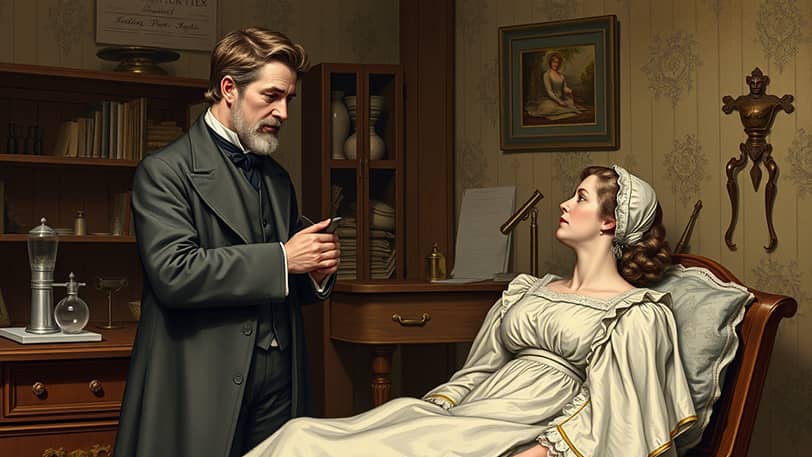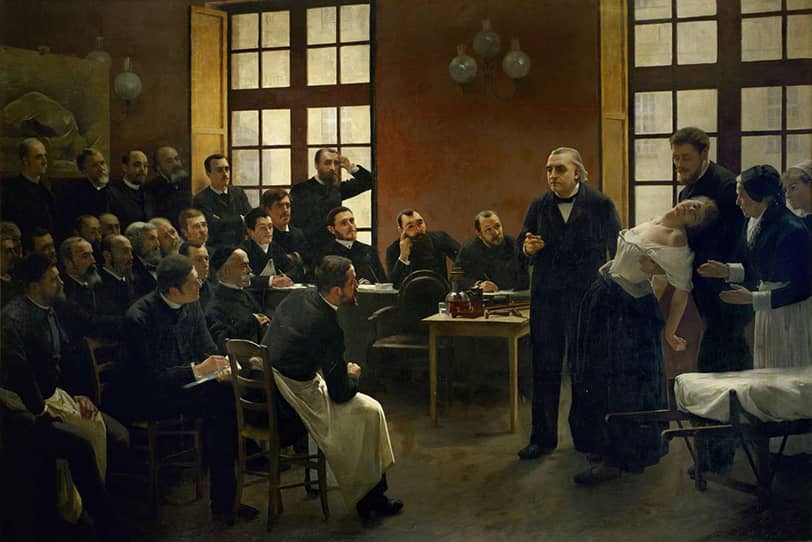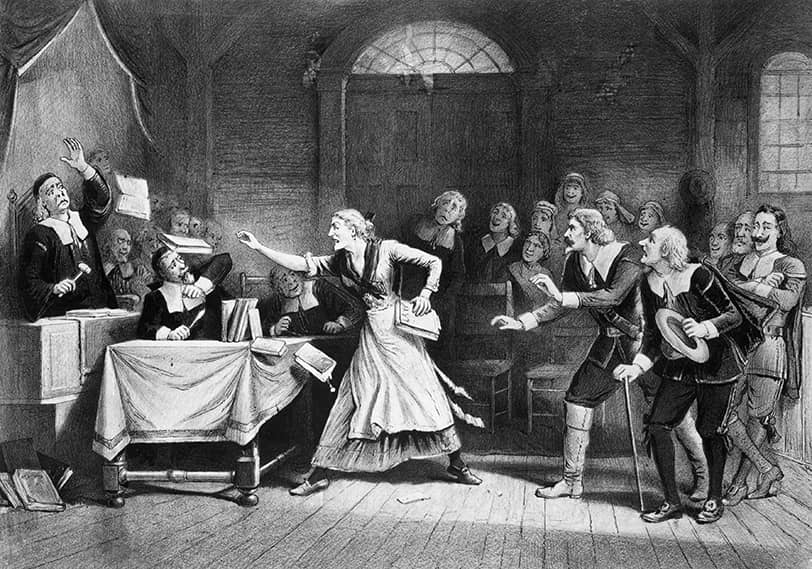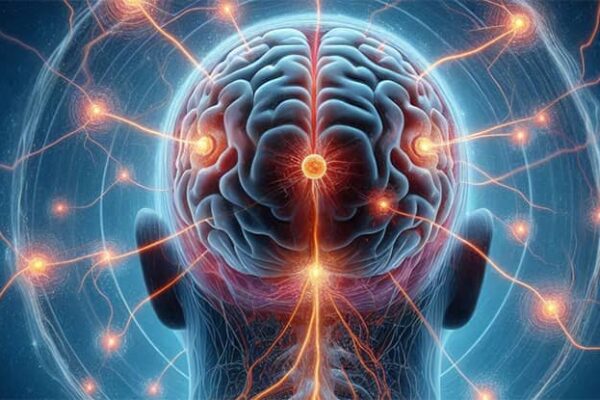Hysteria is one of the most mysterious and controversial phenomena in the history of medicine and psychology. For centuries, the term hysteria has been used to describe a wide range of symptoms, from physical manifestations such as paralysis and convulsions to emotional outbursts, including anxiety, fear, and uncontrollable crying.
However, hysteria has never been just a medical diagnosis. It has always existed at the intersection of culture, society, and science, reflecting the prevailing ideas of its time about health, normality, and pathology. This multifaceted nature makes hysteria such an intriguing subject of study.
Historically, hysteria was considered primarily a “women’s disease,” largely due to ancient beliefs about female nature and women’s role in society. However, over time, it became clear that this condition—if it can even be called that—is far more complex and not confined to gender boundaries. It challenges our understanding of where the line lies between body and mind, between the real and the imagined. Hysteria compels us to think about how cultural, social, and even political factors influence our perception of health and illness.
The relevance of studying hysteria today cannot be overstated. Firstly, it offers a unique opportunity to trace how views on mental health have evolved over the centuries. From ancient theories of the “wandering womb” to modern concepts of conversion disorders, the history of hysteria serves as a mirror reflecting the evolution of medical thought.
Secondly, hysteria remains an important reminder of how easily society can stigmatize and marginalize those whose behavior or condition falls outside accepted norms. Finally, in an era where emotional well-being is becoming an increasingly important topic, studying hysteria helps us better understand how emotions, stress, and trauma can affect both the body and the mind.

The Origins of Hysteria in Antiquity
Despite its modern connotations, hysteria has roots that stretch deep into antiquity. Its history predates modern medicine, emerging in an era when humanity was only beginning to comprehend the nature of diseases and their connection to the body and spirit. Even in ancient civilizations such as Egypt and Mesopotamia, one can find early mentions of symptoms that today might be associated with hysteria. However, at that time, these manifestations were not explained through science but rather through mythology, magic, and belief in the supernatural.
With the development of ancient medicine, particularly in Greece and Rome, hysteria began to take on more defined contours. It was in the works of Hippocrates and other ancient physicians that the first attempts to explain this condition from a medical perspective appeared. However, even in antiquity, hysteria remained closely linked to cultural and social notions about women, their bodies, and their roles in society.
These early theories, despite their naivety from the perspective of modern science, laid the foundation for understanding hysteria as a phenomenon that continues to intrigue and spark debate even today.
Ancient Egypt and Mesopotamia
Ancient Egyptian and Mesopotamian texts contain descriptions of conditions that could today be diagnosed as hysteria. For example, Egyptian papyri mention cases where women suffered from sudden anxiety attacks, unexplained crying, convulsions, and even temporary paralysis. These symptoms were often attributed to “possession” or “divine intervention.” In Mesopotamia, where medicine was closely intertwined with religion and magic, similar conditions were also explained through the lens of the supernatural.
In both cultures, hysterical symptoms were frequently interpreted as the result of malevolent spirits or divine wrath. The treatment of such conditions involved rituals, spells, and prayers aimed at expelling the evil forces. For instance, in Mesopotamia, asu priests (healers) performed elaborate ceremonies to “calm” the gods and relieve the patient of suffering. In Egypt, similar practices were widespread, often incorporating the use of amulets and magical incantations.
Ancient Greece and Rome
With the rise of ancient medicine, particularly in Greece, hysteria began to receive a more “scientific” explanation. Hippocrates, the father of Western medicine, proposed the theory of the “wandering womb,” which shaped the understanding of hysteria for centuries. According to this theory, the uterus, considered a “living creature” within a woman, could move throughout the body, causing different symptoms depending on its location. For example, if the uterus “rose” toward the chest, it could cause suffocation or anxiety, whereas if it “descended,” it could lead to abdominal pain or convulsions.
In the ancient world, hysteria was firmly associated with women, reflecting the patriarchal beliefs about female nature. It was believed that women, particularly those who were unmarried or childless, were more prone to this condition due to “stagnation” in the womb. Treatments included methods aimed at “calming” the uterus, such as aromatherapy, massage, or even forced marriage. In Rome, where Greek medicine further developed, these ideas were supplemented with new treatment methods, but the fundamental concept of hysteria as a “female disease” remained unchanged.
Thus, even in antiquity, hysteria became not just a medical phenomenon but also a reflection of cultural and social norms. Whether explained through magic or the theory of the “wandering womb,” these interpretations reveal how humanity has tried to make sense of the complex and enigmatic aspects of the mind and body.

The Middle Ages and the Renaissance
The Middle Ages and the Renaissance were periods when hysteria took on new, sometimes frightening shades. If in antiquity it was explained through the lens of magic or the “wandering womb,” in the Middle Ages, it became closely associated with religion and belief in the supernatural. This was an era when the boundaries between science, religion, and superstition were extremely blurred, and hysteria found itself at the very center of this contradictory world.
Hysteria and Religion
In the Middle Ages, hysteria was often perceived as a manifestation of possession by evil spirits or the devil. Symptoms such as hysterical fits, hallucinations, or uncontrolled emotions were interpreted as signs that a person was “possessed.” This belief particularly affected women, who were considered more vulnerable to the influence of dark forces. Church chronicles and treatises from that time contain many descriptions of cases where women suffering from hysteria were subjected to exorcisms or other religious rituals aimed at expelling evil spirits.
The peak of religious explanations of hysteria occurred during the witch hunts of the 15th–17th centuries. Women exhibiting symptoms of hysteria, such as seizures, unusual behavior, or “possession,” often became victims of the Inquisition. They were accused of witchcraft, making pacts with the devil, and casting curses.
For example, the infamous Salem witch trials and similar persecutions in Europe often began when local residents displayed behavior that today might be diagnosed as hysteria. These trials became a tragic example of how misunderstanding the nature of mental disorders led to mass hysteria and unjust persecutions.
The First Medical Explanations
With the onset of the Renaissance, when science and medicine gradually began to free themselves from religious dogma, the first attempts to explain hysteria from a medical perspective emerged. Physicians and philosophers such as Paracelsus and Andreas Vesalius sought physical causes for hysteria, moving away from theories of possession.
One key idea of the time was the connection between hysteria, melancholy, and other nervous disorders. It was believed that hysteria arose due to imbalances in the body related to “humors” (the humoral theory) or dysfunctions of the nervous system. For example, Paracelsus suggested that hysteria might be caused by “stagnant” energy in the body, while Vesalius studied brain anatomy in an attempt to find physical causes for mental disorders.
Although these theories were far from the modern understanding of hysteria, they represented an important step toward a rational explanation. Doctors began to view hysteria not as a result of supernatural intervention but as a condition that could be studied and treated.
The Middle Ages and the Renaissance were times when hysteria stood at the crossroads of religion, science, and culture. On one hand, it became a symbol of fear of the unknown and the inexplicable; on the other, it was the subject of the first attempts at rational comprehension. This period demonstrated how easily society could turn misunderstanding into violence but also showed that even in the darkest times, there were those who sought knowledge and truth.

Hysteria in the 19th Century
The 19th century was a turning point in the history of hysteria. It was during this time that hysteria transformed from a mysterious and stigmatized condition into an object of intense scientific study. Physicians, philosophers, and researchers sought new approaches to understanding hysteria, leading to significant changes in medicine and psychology. In Europe, particularly in France and Austria, hysteria became one of the most discussed topics in medical circles, and its study laid the foundation for modern psychiatry and psychoanalysis.
This period is often called the “golden age of hysteria” because hysteria reached the peak of its popularity as a diagnosis. It became not only a medical phenomenon but also a cultural one, reflecting the social norms and expectations of the time. Women, especially those from the upper class, often became “carriers” of this diagnosis, emphasizing the link between hysteria and gender stereotypes.
Two key figures in the study of hysteria in the 19th century were Jean-Martin Charcot and Sigmund Freud. Their work not only changed the understanding of hysteria but also had a tremendous impact on the development of psychology and psychiatry as a whole. Thanks to their research, hysteria was no longer seen as merely a “women’s disease” but began to be understood as a complex psychological disorder requiring deep analysis and comprehension.
The Golden Age of Hysteria
In the 19th century, hysteria became one of the most commonly diagnosed conditions in Europe. Physicians of the time described it as an illness manifesting in a wide variety of symptoms, from physical (paralysis, seizures, loss of sensation) to emotional (anxiety, hysterical fits, uncontrollable emotions). This broad range of symptoms made hysteria a convenient diagnosis for explaining many unexplained conditions.
Interestingly, hysteria became particularly prevalent among upper-class women. This was due not only to medical but also to social factors. Women from aristocratic circles often found themselves in situations where their emotions and desires were suppressed by strict social norms. Hysteria became a kind of “language” through which they could express their suffering. Doctors of the time even joked that hysteria was a “disease of the wealthy,” as poor women engaged in physical labor supposedly had no time for such “whims.”
Jean-Martin Charcot and His Contribution
Jean-Martin Charcot, a renowned French neurologist, played a crucial role in the study of hysteria. At his clinic in the Salpêtrière Hospital, the largest hospital in Paris, he systematically investigated the condition. Charcot was one of the first to consider hysteria a neurological rather than merely a “female” disorder. He meticulously documented the symptoms of his patients, conducting demonstrations for students and colleagues, which made his work widely known.
Charcot was also a pioneer in the use of hypnosis to treat hysteria. He discovered that hypnosis could induce and relieve hysteria symptoms, suggesting a psychological basis for the condition. Although his methods were controversial, they opened new possibilities for understanding the connection between mind and body. Charcot’s work inspired many of his students, including Sigmund Freud, who later expanded on his ideas.
Sigmund Freud and Psychoanalysis
Sigmund Freud, who studied under Charcot, became one of the key figures in the redefinition of hysteria. He rejected the idea that hysteria had purely neurological origins and proposed that it was a psychological disorder linked to repressed memories and traumas. Freud believed that hysteria symptoms resulted from inner conflicts that had not been consciously processed.
One of the most famous cases in the history of psychoanalysis was that of Anna O., a patient of Freud’s colleague Josef Breuer. She suffered from multiple symptoms, including paralysis, hallucinations, and loss of speech. Breuer and Freud used the “catharsis” method, helping Anna recall and relive traumatic events, which led to the disappearance of her symptoms. This case became the foundation for the development of psychoanalysis and the new understanding of hysteria as a disorder rooted in the depths of the psyche rather than in the body.
The 19th century was a time when hysteria ceased to be merely a mysterious illness and became an object of serious scientific study. Thanks to the work of Charcot, Freud, and other researchers, it began to be seen as a complex psychological phenomenon requiring in-depth analysis.

Hysteria in the 20th Century and Modern Times
The 20th century marked a period of radical changes in the understanding of hysteria. While in the 19th century it was one of the most popular diagnoses, in the 20th century, the term gradually lost its relevance. Criticism from the medical community, advances in psychology and psychiatry, and shifts in social and cultural norms led to hysteria being excluded from medical classifications. However, this did not mean that the phenomena previously labeled as hysteria disappeared. On the contrary, they began to be studied from new perspectives, taking into account modern scientific knowledge.
In culture and the arts, hysteria remained an important theme, reflecting societal fears, stereotypes, and perceptions of mental health. Literature, cinema, and theater used the image of the “hysterical woman” as a symbol of suppressed emotions, social constraints, and inner conflicts. However, in the modern world, this image is increasingly subject to critique and reinterpretation.
Today, hysteria is no longer considered a distinct disorder but rather a set of symptoms that may be part of various psychological and psychosomatic conditions. Contemporary medicine and psychology pay great attention to the role of sociocultural factors in shaping such conditions, allowing for a better understanding of their nature and the development of more effective treatment methods.
The Decline of the “Hysteria” Diagnosis
By the mid-20th century, the term “hysteria” faced serious criticism from the medical community. First, it was too vague and covered an overly broad spectrum of symptoms, making it unreliable as a diagnostic category. Second, the term was closely linked to gender stereotypes, raising questions about its objectivity. As a result, hysteria was removed from major medical classifications such as the DSM (Diagnostic and Statistical Manual of Mental Disorders) and the ICD (International Classification of Diseases).
Instead of hysteria, modern medicine adopted more precise diagnoses, such as conversion disorder, somatoform disorders, and dissociative disorders. Conversion disorder, for example, describes a condition in which psychological conflicts “convert” into physical symptoms like paralysis or loss of sensation. These new diagnostic terms allow for more accurate descriptions and treatment of conditions that were once broadly classified as hysteria.
Hysteria in Culture and Art
Hysteria left a deep imprint on 20th-century culture. In literature, it was often used as a symbol of repressed emotions and social limitations. For example, in Charlotte Perkins Gilman’s novel The Yellow Wallpaper, the protagonist suffers from a psychological disorder that can be interpreted as hysteria, induced by patriarchal oppression. In cinema, hysteria was frequently depicted through the “hysterical woman” trope, which became a cliché in classic Hollywood films.
Although the term has disappeared from medical practice, stereotypes associated with hysteria continue to persist. For example, the idea that women are more emotional and prone to “hysterics” still influences public perceptions of mental health. These stereotypes are often used to discredit women, particularly in public spheres, where their emotions may be perceived as a sign of weakness or incompetence.
A Modern Perspective on Hysteria
Today, symptoms that were once labeled as hysteria are understood within the framework of modern psychological and psychosomatic disorders. Conditions such as conversion disorder, somatization, and dissociative states are studied in light of the latest advancements in neuroscience and psychology. Contemporary research suggests that these conditions are often linked to trauma, stress, and emotional conflicts that manifest as physical symptoms.
Modern medicine and psychology also emphasize the role of sociocultural factors in shaping mental disorders. Studies indicate that women are still more frequently diagnosed with psychosomatic symptoms than men, which may be influenced by gender stereotypes and societal pressures. Additionally, cultural differences affect how people express emotions and experience stress, factors that are now taken into account in diagnosis and treatment.
In the 20th century, hysteria underwent a significant transformation. From an outdated and stigmatized diagnosis, it became a subject of deep scientific study, incorporating both biological and sociocultural aspects. Today, hysteria remains an important topic, reminding us of the complex relationship between the mind, body, and society.

Why Hysteria Remains a Relevant Topic?
Despite its disappearance as a medical diagnosis, hysteria continues to be an important and relevant topic of discussion. Its history is not merely a chronicle of medical misconceptions and discoveries but also a mirror reflecting the cultural, social, and psychological aspects of human life. Studying hysteria helps us understand how society perceives mental health, how stereotypes are formed, and how science evolves in response to new challenges.
Today, hysteria has moved beyond the medical discourse and has become a metaphor used to describe various phenomena—from mass panic to political crises. Terms like “media hysteria” or “collective hysteria” have become part of everyday language, highlighting that hysteria is not only an individual experience but also a collective phenomenon.
Moreover, hysteria remains a subject of interest for researchers from various fields—historians, psychologists, cultural theorists, and sociologists. Its study requires an interdisciplinary approach that allows for multiple perspectives, making hysteria not only relevant but also crucial for understanding the modern world.
Historical Lessons
The history of hysteria and its study allows us to trace how ideas about the connection between the body and mind have changed, how diagnostic and treatment methods have developed, and how science has overcome its own biases.
For example, the work of Jean-Martin Charcot and Sigmund Freud on hysteria laid the foundation for modern psychology and psychiatry. These studies demonstrated that mental disorders cannot be reduced solely to physical causes and emphasized the importance of psychological factors. Thus, studying hysteria helps us not only better understand the past but also draw important lessons for the future.
The Importance of an Interdisciplinary Approach
Hysteria is a phenomenon that cannot be fully understood through a single discipline. Its study requires an interdisciplinary approach, bringing together history, psychology, cultural studies, sociology, and even neuroscience.
For historians, hysteria is a way to understand how societies have perceived mental health in different eras. For psychologists, it offers insight into the relationship between emotions, trauma, and physical symptoms. For cultural theorists and sociologists, hysteria reflects social norms, gender stereotypes, and cultural conflicts.
For example, analyzing hysteria in the context of gender stereotypes helps us understand how societal attitudes influence perceptions of mental health. Studying hysteria as a cultural phenomenon allows us to see how art and literature both reflect and shape our understanding of psychological disorders.
Hysteria remains relevant because it touches on some of the deepest aspects of human life—from personal experiences to collective fears. It is not just a historical curiosity but a key to understanding how we perceive ourselves and the world around us.

Conclusion
The history of hysteria is not only a story of medical discoveries but also a record of profound social, cultural, and psychological transformations. Over the centuries, our understanding of hysteria has evolved—from mystical explanations involving demonic possession and the “wandering womb” to complex psychological theories that view it as a result of inner conflicts and trauma.
In ancient times, hysteria was closely linked to magic and religion; in the Middle Ages, it became a symbol of the struggle between science and superstition; and in the 19th century, it became the focus of scientific investigation. Today, while the term “hysteria” is no longer used in medical practice, its legacy continues to shape our understanding of mental health and its relationship with society.
The history of hysteria teaches us the importance of critically examining medical and social norms. It reminds us how easily society can stigmatize and marginalize those whose behavior or condition falls outside accepted standards.
Hysteria, long considered a “women’s disease,” serves as a striking example of how gender stereotypes can distort scientific understanding and influence diagnosis and treatment. This historical experience underscores the need for a more nuanced and compassionate approach to mental health, one that takes into account both biological and sociocultural factors.
The future study of hysteria opens new possibilities for research and reinterpretation. Modern science, integrating neuroscience, psychology, sociology, and cultural studies, allows for a deeper understanding of the symptoms once attributed to hysteria. For example, research into conversion and dissociative disorders helps uncover the mechanisms linking the mind and body. Additionally, the history of hysteria continues to inspire researchers to explore the role of trauma, stress, and social pressure in shaping mental disorders.
Ultimately, hysteria is not just a historical phenomenon but a valuable lesson for the modern world. It reminds us of the complex relationship between the mind, body, and society and of the need to continually reassess and refine our approaches to mental health. The history of hysteria demonstrates that science and society must work together to avoid repeating past mistakes and to find new paths to healing and understanding.




